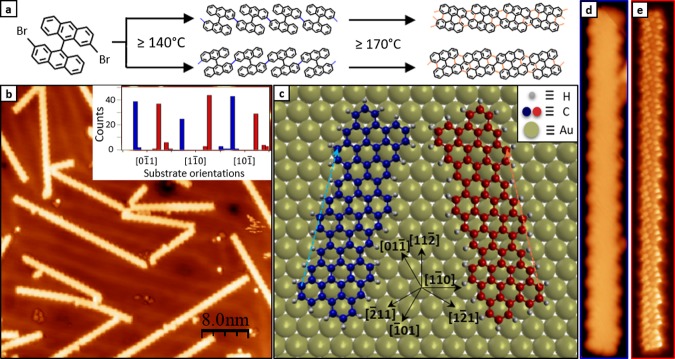Figure 1.
Synthesis, structure, and epitaxy of (3,1)-chGNRs on Au (111). (a) Schematic reaction path for the synthesis of (3,1)-chGNRs with threshold temperatures indicated for each synthetic step. (b) Constant current STM image (45 nm × 45 nm; Vs = −0.15 V; It = 0.05 nA) of a representative (3,1)-chGNRs sample on Au(111) after annealing to 350 °C, with the histogram on the azimuthal orientation distribution with respect to the high-symmetry substrate directions (inset) obtained from the analysis of 245 different nanoribbons. (c) Epitaxial relation exemplified with three-monomer-long (3,1)-chGNRs enantiomers on Au(111), where blue/orange dashed arrows depict the commensuration every two unit cells. The translational adsorption site in the model is arbitrary because the particular adsorption position could not be unambiguously extracted from the experimental images. (d) Constant current STM (15.4 nm × 2.5 nm; Vs = −1.1 V; It = 0.11 nA) and (e) constant height STM image (15.4 nm × 2.5 nm; Vs = 2 mV) obtained with a CO-functionalized tip. Red/blue colors are employed to specify the information associated with each enantiomer in panels b (inlet), c, d, and e.

